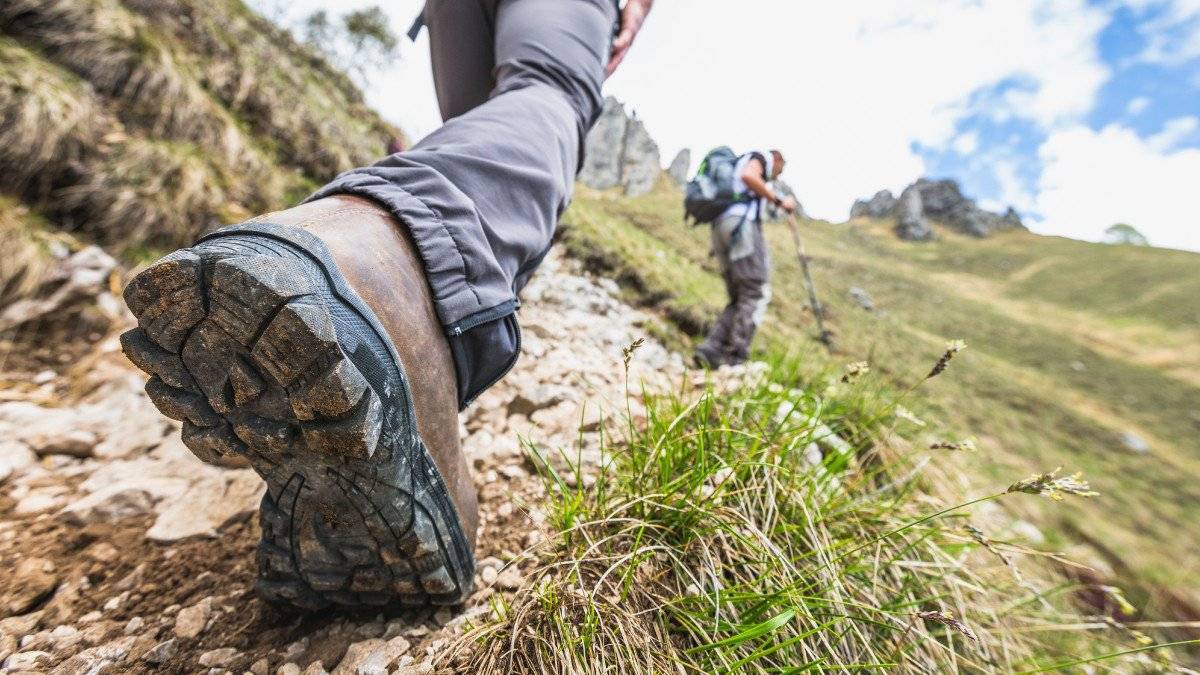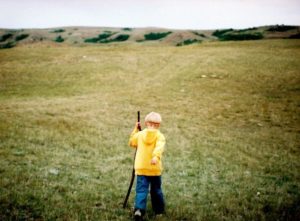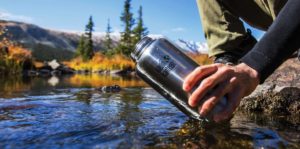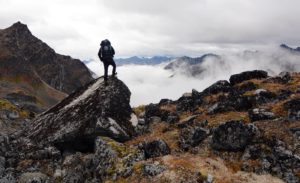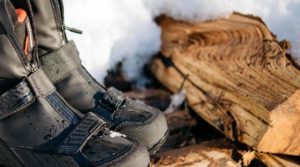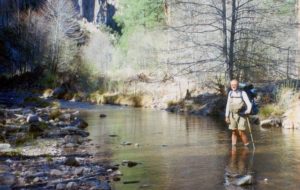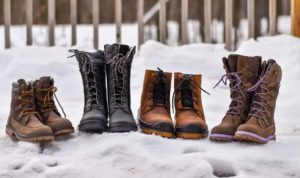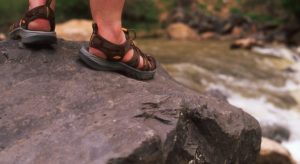As any seasoned outdoorsman will vouch, the essential ingredients for a great outdoor vacation are a ready-for-anything attitude, reasonably good physical condition and the right gear for the kind of activity, terrain, and climate or weather likely to be encountered. Being kitted out right is the first step to a successful outdoor adventure vacation: the presence or absence of the correct gear can make a vacation great – or disastrous. Wearing the right kind of clothing is critical for any enjoyable and successful outdoor experience, including a hiking trip.
Creating a Check-List for a Hiking Trip – Clothing and Personal Gear
The best way to create a check-list of what to wear on a hiking vacation is to break up the requirements: clothing, protection for the head, face, feet, and hands – based on the time to be spent in the outdoors, the kind of terrain and possible weather conditions.
Clothing Essentials on a Hiking Vacation
Whether it’s a for-starters adventure family vacation or a hard-core solo hiking vacation, the principles of clothing are the same. Loose-fitting cotton clothes are best for hot and sultry climates, while layered clothing is ideal for colder climates where the weather turns warm as the day proceeds, and body temperature rises with exercise. For layering, begin with chest hugging innerwear. While cotton fabric has traditionally been preferred for innerwear due to its ability to breathe and absorb sweat, many hikers and outdoor gear providers now recommend wicking fabrics that “wick” away sweat from the body. There is some debate, however, on moisture wicking innerwear versus cotton innerwear: as to whether it is really desirable to “wick away” the moisture to the outer shirt – making the outerwear wetter than in the case of a cotton inner. The best way to decide on this would be to personally test out both fabrics on short hikes before setting out on a long hiking vacation.
Over the innerwear, layer with a warm tee, and then an outer jacket. Fabrics that breathe will be more comfortable, especially when there are large variations between day and night temperatures. As daytime temperature increases and your body warms up with the exercise, peel off one layer at a time to stay comfortable. Reverse the procedure later in the day, when temperatures begin to fall or when a halt is called. In extreme cold, it is critical that layering is constantly moderated to ensure that the body is never too warm or too cold, since overheating and consequent perspiration can be extremely uncomfortable and even dangerous.
Shoes and Boots – Caring for Feet on a Hiking Trip
Since the strain on the feet is pretty high when walking continuously, it is important to be fussy about the kind of shoes or boots worn on a hike. Shoes should be of the lace-up type, and made of a material that breathes. Well-broken in shoes are a must; never wear new shoes on a hike as it can lead to shoe-bite, blistering and excruciating pain when walking.
The choice of whether shoes or boots are right for a particular trek will depend on the kind of terrain. If the terrain is likely to be uneven, rocky or thick with undergrowth, boots with ankle support will provide better protection for feet.
Protection for Head, Eyes and Skin on a Hiking Vacation
Whatever the weather, a cap is something no hiker should venture outdoors without – it is vitally important to protect one’s head from the blazing sun or pouring rain or even night-time dew on a long trek. Protective headgear – a cotton cap in warm weather or a woolen cap or balaclava in colder weather – can safeguard against headaches, chills and worse. A scarf for the throat and ears is also a good idea. It is advisable to keep headgear on even if the sun is not directly overhead, and after sundown as well, to protect against dew.
Wearing sunglasses will shield eyes against the glare of a blazing sun or snow, and will prevent damage to eyes and make for easier hiking. For the skin, a water-based sun-block is a good way of protecting against sunburn.
It would also be wise to carry rainwear, either a lightweight rain poncho or a rain suit that will provide protection against the unexpected shower or thunderstorm. Staying dry is important in the outdoors, since getting wet, especially when the body is warmed up, might lead to chills and fever.
The right kind of clothing and personal accessories on any outdoor adventure vacation play a critical role in ensuring a safe, enjoyable and memorable adventure, whether it is a hiking or trekking vacation or a camping trip. Wear clothes and protective gear right for the adventure – and get set for a great and mem
What to carry on your hiking day?
One of the most important factors that contribute to an enjoyable outdoor adventure vacation is carrying the right gear for a specific trip. This depends on a variety of factors – the duration of the trip, the kind of terrain that will be traversed and prevailing weather conditions. While hiking outfitters and stores stocking outdoor hiking gear will offer a mind-boggling variety of equipment, it would be smart to stick to the basics in the beginning. Since all gear will have to be carried on foot, it would be a good idea to stay light on a hiking trip.
Outdoor Gear to Carry on a Hiking Trip
Whether it’s a day hike or a longer family adventure vacation, one of the most important things to carry is water. Carrying a supply of water for an entire trip that lasts several days might be difficult, but if it is a known trail, there are likely to be identified water points along the route where refills can be made. Essential for any hike is a good, sturdy water-bottle that can be slung across the chest or hooked on to a pack, capable of carrying at least a liter of water. An insulated bottle is even better, as a sip of cold water can be immensely refreshing on a hot day.
A useful accessory would be a sturdy cane or stick that could act as a third leg for balance in slippery or rocky terrain. A flashlight is a must for emergency use, even on a day hike, in case some unexpected event causes a delay and there is a need to move after sundown.
If photography and bird-watching are subjects of interest, then a camera, a pair of binoculars and perhaps a bird book would be a part of the kit. Be prepared, however, for the possibility that there may not be time to use either as much as desired.
First-Aid Kit – A Hiking Vacation Essential
It goes without saying that one will need to carry all personal medicines required for the duration of the adventure trip, as the likelihood of coming across a medical store would be low. Also an essential part of the hiker’s must-carry list is a first-aid kit, complete with medicines for common ailments like fever, nausea and vomiting, stomach upsets, colds, chills, insect bites, anti-venom if the area is known for snakes, as well as bandages and other items required for injuries and sprains.
Carrying Comfort on a Hiking Trip with Day Pack and Dry Bag
Since everything that’s carried on a hike has to be carried on one’s back, getting the right pack – lightweight, comfortable and well-fitting – is all important. A wide choice of hiking packs will be available at specialist hiking outfitters or shops selling outdoor hiking gear: spend time ensuring the weight and fit of the pack feel right, since it is likely to become a constant companion on outdoor adventure vacations.
Another useful item is a dry bag, which can keep cameras and electronic equipment safe from rain, dew or when crossing a stream or water body.
Being kitted out right is the first step to a successful and memorable outdoor adventure vacation, whether it’s a hiking trip, mountain vacation or a camping adventure. Carry the right gear required to make the adventure safe and fun – and enjoy the challenge!
Hiking Nutrition
To be able to enjoy a hiking trip to the fullest, it is important to eat the right kind of foods – not just on the trail, but from the day before itself. Since hiking involves long stretches of constant physical activity, eating the wrong kinds of foods can make one feel heavy and sluggish, making walking difficult and uncomfortable, often also causing stitches and stomach cramps. Ideal foods for a hiking trip – whether it’s an easy family adventure vacation or a challenging hike with friends – would be foods that satisfy feelings of hunger without making the body feel heavy, and are capable of providing high levels of nourishment and energy.
Nutrition Tip – for the Day Before a Hiking Trip
Prepare the body for the hike by avoiding fatty or highly spiced food that can place a strain on the digestive system. Rather, opt for a nutritious, fibre-rich balanced meal that combines a good mix of proteins, carbohydrates and vitamins. Eat only till comfortably full. Avoid a high carb meal as this is likely to get digested rapidly, resulting in early-morning hunger just before the hike.
On the morning of the hike, eat a moderate breakfast of carbs and protein like eggs and cereal, with enough fibre to stay in the stomach for a while and enough carbs to provide energy for the activity ahead. Some fruit would be good.
Carry High-Fibre, High-Energy Foods for Lightweight Hiking
It’s equally important to carry the right food on the hike itself. Since all stuff on a hiking vacation usually travels in a backpack, the lighter the food carried, the better. Dry, high-fibre protein snacks are best for the purpose, providing energy without the feeling of heaviness. Nuts, trail mixes and granola bars pack in the energy, are easy to carry and can be eaten on the go if need be.
If a picnic lunch is on the cards, think again of filling and easy-to-carry foods. Sandwiches are fine, but need to have substantial filling. Avoid spice and fats – best options are proteins and fibre-rich foods.
If there are plans to cook a meal during the hike, keep the same principle in mind. Carry a camp stove and canned supplies to provide a simple but nourishing meal.
The best way to carry food items on the hike would be to separate them according to time of usage and put them in compact containers that are air-tight, water-tight and insect-proof, to keep the contents safe from rain, ants and other unexpected wild visitors.
Stay Hydrated on a Hiking Vacation by Carrying Enough Water
Guarding against dehydration is most important on a hike, as this can lead to headache, fatigue, mistakes due to lack of concentration as well as more serious medical problems. It is important to carry enough drinking water and fluids: on long treks it would be necessary to find water points at regular intervals to refill supplies. Carrying fruit juices in cartons is also a good idea, only remember to be eco-sensitive and bring back the empty cartons, or carry them to a disposal point.
Whether the hiking trip is a simple day hike or a long haul, eating right and staying hydrated is critical to the enjoyment and successful completion of the adventure. Stay with proteins, high-fibre and plenty of fluids, and enjoy the great outdoors!


